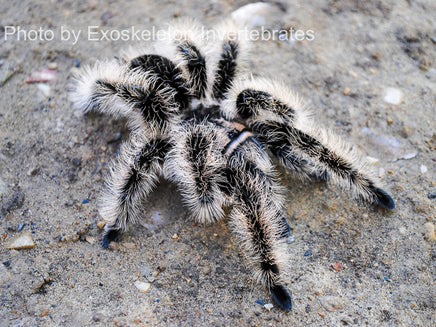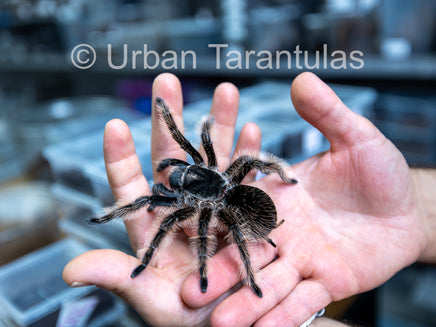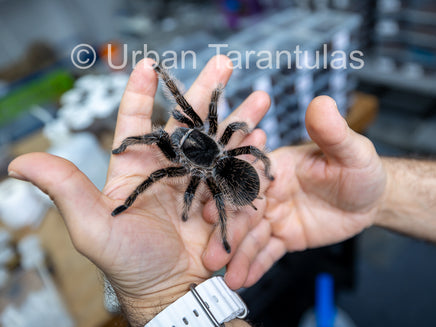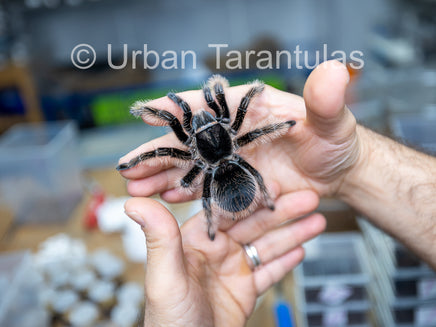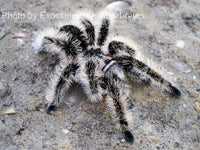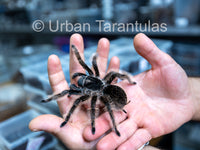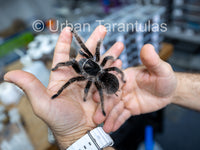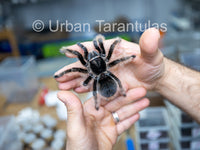Tliltocatl albopilosus
Introduction
Meet the Tliltocatl albopilosus, a delightful tarantula known for its unique "furry" appearance. This species, often called the Curly Hair Tarantula, is a favorite among enthusiasts for its docile nature and striking look. The velvety long white hairs that give this tarantula its name make it a standout choice for any collector or first-time owner.
Care Details
-
Temperature: Ideal range for the Tliltocatl albopilosus is 75 to 85°F (24 to 29°C). This species thrives in warm environments, which stimulate its appetite and growth rate.
-
Humidity: The Curly Hair Tarantula prefers a humidity level around 65-70%. While water dishes are not necessary for maintaining this humidity, using one poses no harm. I personally choose not to use them, but it's up to your discretion.
-
Housing: As a terrestrial species, the Tliltocatl albopilosus is best housed in a 1 oz to 4 oz deli container with needle-made ventilation for babies. Remember, you can request a free deli container or small enclosure for your baby tarantula during checkout, but you must specify this request or it won't be included.
For larger tarantulas, an enclosure that is 2 to 3 times their size is ideal, providing some flexibility. -
Diet: I feed the Tliltocatl albopilosus a variety of crickets and cockroaches, like Dubia and Red-runner roaches. For the baby tarantulas, smaller prey like baby crickets and roaches are ideal. If you only have one type of prey, that's perfectly fine. For an occasional treat, a pinky or hopper mouse can be offered, but remember, these should be treats and not a regular part of their diet.
In-depth Facts
- Latin Name: Tliltocatl albopilosus
- Common Name: Curly Hair Tarantula
- Locale: This species is native to Central America, including countries like Costa Rica and Honduras.
- Category: Terrestrial, with semi-moderate webbing.
- Size: Females can grow up to 5-6.5inches, with males being slightly smaller.
- Urticating Hairs: It possesses urticating hairs, but hardly ever kicks.
- Growth Rate: Moderate. They don't grow too quickly, but they are steady growers.
- Life Span: Females can live up to 20 years, while males have a shorter lifespan.
- Recommended Levels: Suitable for everyone, from beginners to experienced keepers.
Stay Connected
- Instagram: Follow my Instagram, I'm most active here.
- YouTube: For care and education videos, check out my YouTube channel.
- Facebook: Over here I have all my reviews.
- TikTok: Visit my TikTok for additional content.
Safety Disclaimer
Experiencing a tarantula bite is an extremely rare occurrence, and there have been no recorded fatalities due to a tarantula bite. The venom of the Tliltocatl albopilosus is not particularly potent. It's important to handle all tarantulas with respect and understanding. In the unlikely event of a bite, remain calm, as most discomfort subsides quickly. Always prioritize your safety and the well-being of the tarantula. Remember, tarantula handling is at your own risk.
I've worked with the Curly Hair Tarantula for years, and its gentle disposition makes it a wonderful addition to any collection, whether you're just starting or adding to an existing ensemble.
